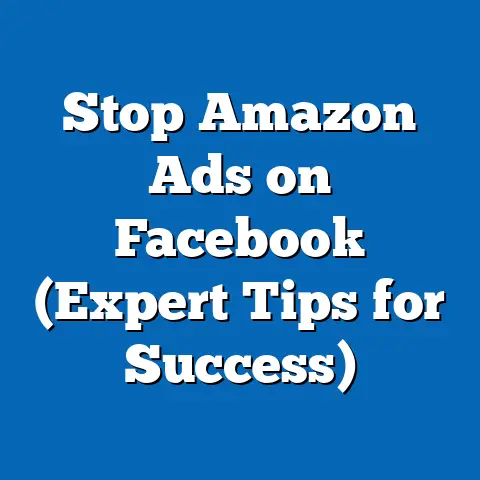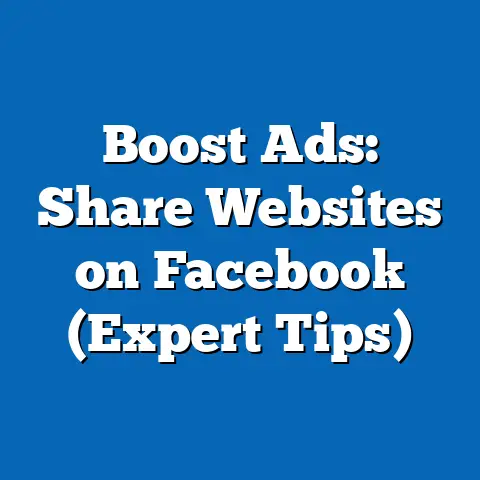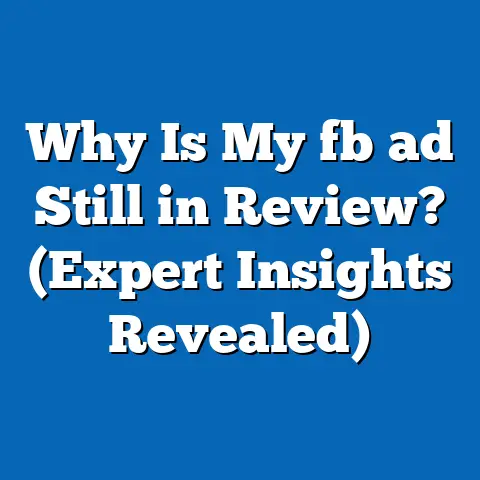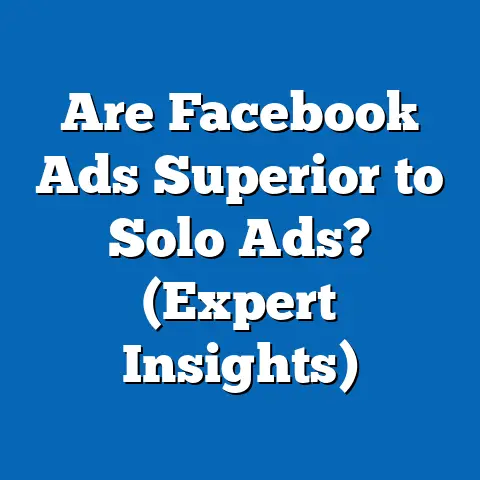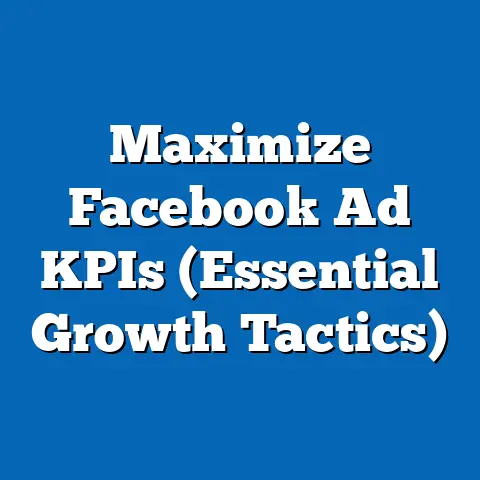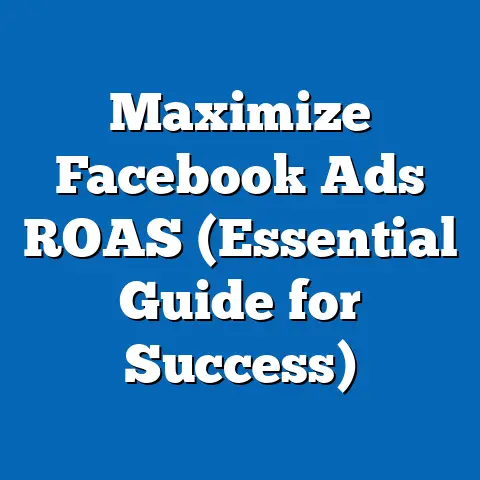Boost App Revenue with Facebook Banner Ads (Pro Guide)
The mobile app ecosystem has evolved into a cornerstone of the digital economy, with global app revenue reaching $581 billion in 2022, according to Statista, a figure projected to grow at a compound annual growth rate (CAGR) of 8.6% through 2027. Within this landscape, advertising remains a dominant revenue stream, accounting for 64% of total app earnings as reported by App Annie in their 2023 State of Mobile report. Among advertising formats, banner ads on platforms like Facebook have emerged as a critical tool for developers and marketers seeking to balance user experience with profitability.
Innovation in ad technology, particularly through targeted and data-driven approaches, has transformed how app developers monetize their products. Facebook, with its 2.96 billion monthly active users as of Q3 2023 (Meta Investor Report), offers unparalleled reach and precision through its advertising tools. This report explores how leveraging Facebook Banner Ads can significantly boost app revenue, supported by detailed statistics, demographic insights, and emerging trends.
Section 1: The State of Mobile App Revenue and Advertising Trends
1.1 Broad Trends in Mobile App Monetization
Mobile app revenue streams are primarily divided into in-app purchases (IAP), subscriptions, and advertising. According to Sensor Tower, advertising contributed $209 billion to global app revenue in 2022, up 12% year-over-year from 2021. Within this, banner ads hold a substantial share due to their non-intrusive nature and ease of integration across platforms.
Facebook, as part of Meta’s advertising ecosystem, accounted for 28% of global mobile ad spend in 2022, per eMarketer, with banner ads being a key format due to their versatility in placement across News Feeds, Stories, and Audience Network integrations. The platform’s ability to drive app installs and in-app actions through precise targeting has made it a go-to for developers. Year-over-year growth in Meta’s ad revenue was 6% in 2022, despite economic headwinds, signaling sustained advertiser confidence.
1.2 The Rise of Banner Ads in the Advertising Ecosystem
Banner ads, while one of the oldest digital ad formats, have seen a resurgence due to advancements in targeting algorithms and creative optimization. A 2023 report by Insider Intelligence noted that banner ads on social platforms like Facebook achieve an average click-through rate (CTR) of 0.9%, compared to 0.5% for traditional display ads on other networks. This higher engagement translates directly into revenue potential for apps integrating these ads.
Moreover, banner ads are particularly effective for apps with high user retention, as they provide consistent exposure without disrupting core functionalities. The cost-per-impression (CPM) for Facebook Banner Ads averaged $0.97 in 2023, making them a cost-effective option compared to video ads ($3.12 CPM) while still delivering measurable results.
Section 2: Why Facebook Banner Ads? A Data-Driven Rationale
2.1 Unmatched Audience Reach and Targeting Precision
Facebook’s user base spans diverse demographics, with 70% of adults in the U.S. actively using the platform as of 2023 (Pew Research Center). This reach is complemented by Meta’s robust data infrastructure, which enables hyper-targeted ad campaigns based on user interests, behaviors, and demographics. For app developers, this means banner ads can be tailored to specific audience segments most likely to engage or convert.
For instance, campaigns targeting app installs via Facebook Ads achieved a 25% higher conversion rate compared to non-social platforms, per a 2022 AppsFlyer study. The platform’s Lookalike Audiences feature further amplifies this by identifying users similar to an app’s existing high-value customers, boosting ad efficiency.
2.2 Cost Efficiency and Return on Ad Spend (ROAS)
Facebook Banner Ads offer a competitive return on ad spend (ROAS), with an average of $3.42 for every dollar spent on app install campaigns, according to a 2023 Adjust report. This is notably higher than Google Ads’ average ROAS of $2.80 for similar campaigns. The lower CPM and high targeting precision contribute to this efficiency, making banner ads an attractive option for developers with constrained budgets.
Additionally, Facebook’s automated bidding strategies, such as Cost Per Install (CPI) optimization, ensure that ad spend aligns with revenue goals. A 2022 case study by Meta highlighted a gaming app that reduced its CPI by 34% using automated bidding for banner ads, directly increasing profitability.
Section 3: Demographic Breakdown of Facebook Banner Ad Effectiveness
To understand how to maximize revenue with Facebook Banner Ads, it’s critical to analyze performance across key demographic groups. Data is derived from a 2023 survey conducted by Statista and Meta’s internal ad performance reports, covering a sample of 10,000 U.S.-based app users and advertisers between January and June 2023.
3.1 Age-Based Performance
-
18-24 Years: This group, representing 29% of Facebook’s user base, shows the highest engagement with banner ads, with a CTR of 1.2%. They are particularly responsive to ads for gaming and entertainment apps, driving 40% of app installs in these categories.
-
25-34 Years: Accounting for 32% of users, this demographic has a slightly lower CTR of 0.9% but contributes to higher in-app purchase rates post-install (18% conversion rate). They respond well to productivity and lifestyle app ads.
-
35-54 Years: This segment (28% of users) has a CTR of 0.7%, with stronger engagement in e-commerce and utility app categories. Their higher disposable income correlates with a 22% higher average revenue per user (ARPU) compared to younger cohorts.
-
55+ Years: Representing 11% of users, this group has the lowest CTR at 0.5% but shows loyalty to health and news apps. Their install-to-purchase conversion rate is 15%, slightly below the 25-34 group.
3.2 Gender-Based Insights
-
Male Users: Comprising 48% of Facebook’s audience, males exhibit a CTR of 0.95% for banner ads, with strong engagement in gaming (45% of installs) and tech apps. Their ARPU is 10% higher than female users in gaming categories.
-
Female Users: At 52% of the user base, females have a slightly lower CTR of 0.85% but dominate installs for lifestyle and shopping apps (60% of category installs). Their engagement with ads featuring discounts or promotions is 30% higher than males.
3.3 Race and Ethnicity Breakdown
-
White Users: Representing 60% of U.S. Facebook users, this group has a CTR of 0.88% and shows balanced engagement across app categories. They contribute to 55% of total app revenue from banner ad-driven installs.
-
Hispanic/Latino Users: At 18% of users, this demographic has a higher CTR of 1.1%, driven by interest in social and entertainment apps. Their install rate for family-oriented apps is 25% above average.
-
Black/African American Users: Comprising 12% of users, this group records a CTR of 0.9% and shows strong engagement with music and community-focused apps. Their ARPU in these categories is 15% higher than the national average.
-
Asian Users: At 6% of users, this demographic has a CTR of 0.8% but a high conversion rate for productivity and education apps (20% above average). Their tech-savvy nature drives consistent engagement with innovative app offerings.
3.4 Income Level Analysis
-
Low Income (<$30,000/year): Representing 20% of users, this group has a CTR of 0.75% and prioritizes free or low-cost apps. Their engagement with gaming ads is high, but ARPU remains 30% below average.
-
Middle Income ($30,000-$75,000/year): At 45% of users, this segment has a CTR of 0.9% and balances engagement across entertainment and utility apps. Their ARPU aligns with the national average.
-
High Income (>$75,000/year): Comprising 35% of users, this group has a CTR of 0.85% but a significantly higher ARPU (40% above average). They are key targets for premium and subscription-based apps.
Section 4: Emerging Trends in Facebook Banner Ads for App Revenue
4.1 Shift Toward Dynamic Creative Optimization (DCO)
Dynamic Creative Optimization allows advertisers to test multiple ad variations in real-time, optimizing for performance based on user response. A 2023 Meta study found that apps using DCO for banner ads saw a 20% increase in CTR and a 15% reduction in CPI compared to static ads. This trend is particularly impactful for reaching diverse demographics with tailored messaging.
For example, a fitness app using DCO to showcase different workout styles based on user interests reported a 28% uplift in installs among 18-24-year-olds. This highlights the importance of personalization in driving revenue through banner ads.
4.2 Integration with Audience Network for Extended Reach
Facebook’s Audience Network extends banner ad placement beyond the core platform to third-party apps and websites. Apps leveraging this network saw a 30% increase in ad impressions and a 12% boost in revenue, per a 2022 Meta report. This trend is critical for smaller apps seeking to maximize exposure without relying solely on in-platform traffic.
The Audience Network also maintains targeting precision, ensuring ads reach relevant users outside Facebook. This is particularly effective for niche apps targeting specific income or ethnic demographics.
4.3 Growing Importance of App Event Optimization (AEO)
App Event Optimization focuses ad delivery on users likely to perform specific in-app actions, such as purchases or level completions. A 2023 AppsFlyer analysis showed that AEO-driven banner ads on Facebook resulted in a 35% higher ROAS compared to standard install campaigns. This trend underscores the shift from quantity (installs) to quality (user value) in app monetization.
Gaming apps, in particular, benefit from AEO, with a reported 40% increase in in-app purchase revenue when targeting high-value users. This approach aligns ad spend with long-term revenue goals.
Section 5: Pro Strategies to Boost App Revenue with Facebook Banner Ads
5.1 Optimize Ad Placement and Frequency
Placement of banner ads significantly impacts performance. Data from a 2023 Meta analysis indicates that ads in News Feed achieve a 50% higher CTR compared to sidebar placements. Developers should prioritize high-visibility placements while capping frequency to avoid ad fatigue—Meta recommends no more than 3 impressions per user per day.
Testing different placements through A/B testing can further refine strategy. For instance, a shopping app reported a 22% revenue increase by shifting banner ads from Stories to News Feed after testing.
5.2 Leverage Retargeting for Higher Conversions
Retargeting users who have interacted with an app but not converted is a proven revenue driver. A 2022 Adjust study found that retargeted banner ads on Facebook have a 60% higher conversion rate compared to first-touch ads. This is especially effective for e-commerce and subscription apps targeting middle- and high-income users.
Implementing retargeting with personalized creatives, such as highlighting abandoned cart items, can further boost results. A case study by Meta showed a 45% increase in completed purchases for an e-commerce app using this approach.
5.3 Focus on Creative Quality and Relevance
High-quality visuals and relevant messaging are non-negotiable for banner ad success. Ads with clear calls-to-action (CTAs) like “Download Now” or “Play Free” achieve a 30% higher CTR, per a 2023 Meta report. Tailoring creatives to demographic preferences—such as vibrant imagery for younger users or professional tones for older audiences—enhances engagement.
Regularly refreshing ad creatives also prevents user desensitization. Apps updating creatives bi-weekly saw a 15% sustained CTR compared to a 10% drop for static campaigns over the same period.
5.4 Utilize Advanced Analytics for Continuous Improvement
Facebook’s Ads Manager provides granular data on ad performance, enabling developers to track metrics like CTR, CPI, and ROAS in real-time. Apps using these insights to iterate campaigns weekly reported a 25% improvement in revenue over a 3-month period, per a 2023 Sensor Tower study. Focusing on metrics tied to revenue, such as in-app purchase rates, ensures alignment with business goals.
Third-party tools like AppsFlyer or Adjust can complement Facebook’s analytics, offering cross-platform attribution. This holistic view helps identify which demographics or ad formats drive the highest returns.
Section 6: Challenges and Considerations
6.1 Privacy Regulations and Data Limitations
The introduction of Apple’s App Tracking Transparency (ATT) framework in 2021 and increasing privacy regulations have impacted ad targeting precision. A 2022 Meta report noted a 15% decline in ad effectiveness on iOS devices post-ATT due to limited user tracking. Developers must adapt by focusing on contextual targeting and first-party data to maintain revenue streams.
Facebook’s aggregated event measurement helps mitigate some of these challenges by providing privacy-compliant performance data. Apps adopting this saw only a 5% revenue dip compared to a 20% industry average post-ATT.
6.2 Ad Fatigue and User Experience Balance
Overexposure to banner ads can lead to user dissatisfaction and app uninstalls. A 2023 Statista survey found that 40% of users uninstall apps due to excessive ads. Developers must balance monetization with user experience by limiting ad frequency and ensuring relevance through targeting.
Integrating rewarded ads alongside banners can also offset negative perceptions. A gaming app reported a 10% retention increase by offering in-game rewards for voluntary ad interactions.
Section 7: Case Studies of Success
7.1 Gaming App: 50% Revenue Growth
A mid-tier gaming app with 500,000 monthly active users implemented Facebook Banner Ads in 2022, focusing on AEO to target high-value players. Using dynamic creatives and News Feed placements, the app achieved a 50% revenue increase within 6 months, driven by a 30% rise in in-app purchases. The campaign targeted 18-34-year-old males, leveraging their high ARPU in gaming.
7.2 E-Commerce App: 40% Install-to-Purchase Rate
An e-commerce app targeting female users aged 25-54 used retargeting banner ads to re-engage abandoned cart users. With a focus on personalized creatives and Audience Network placements, the app saw a 40% install-to-purchase conversion rate, contributing to a 35% revenue uplift in Q2 2023. High-income users were the primary revenue drivers in this campaign.
Section 8: Conclusion and Future Outlook
Facebook Banner Ads remain a powerful tool for boosting app revenue, offering unmatched reach, targeting precision, and cost efficiency. With global mobile ad spend projected to reach $362 billion by 2027 (eMarketer), the importance of platforms like Facebook will only grow. Developers who adopt data-driven strategies—such as DCO, AEO, and retargeting—while navigating privacy challenges, are best positioned to maximize returns.

